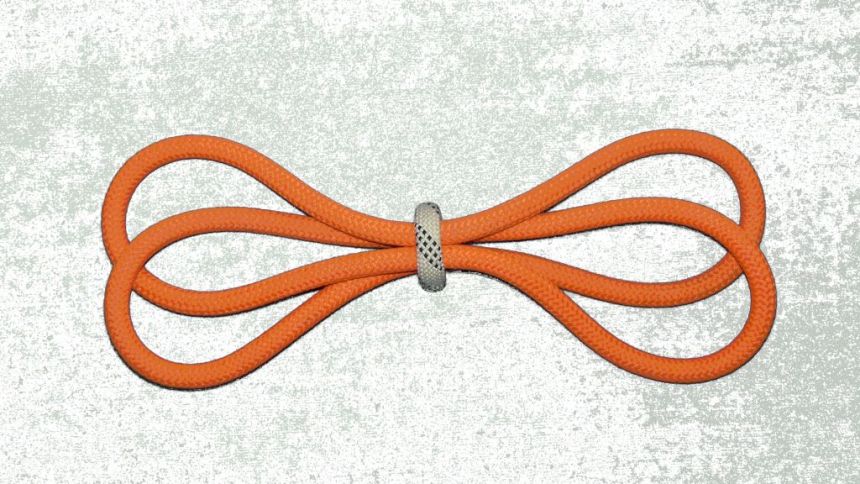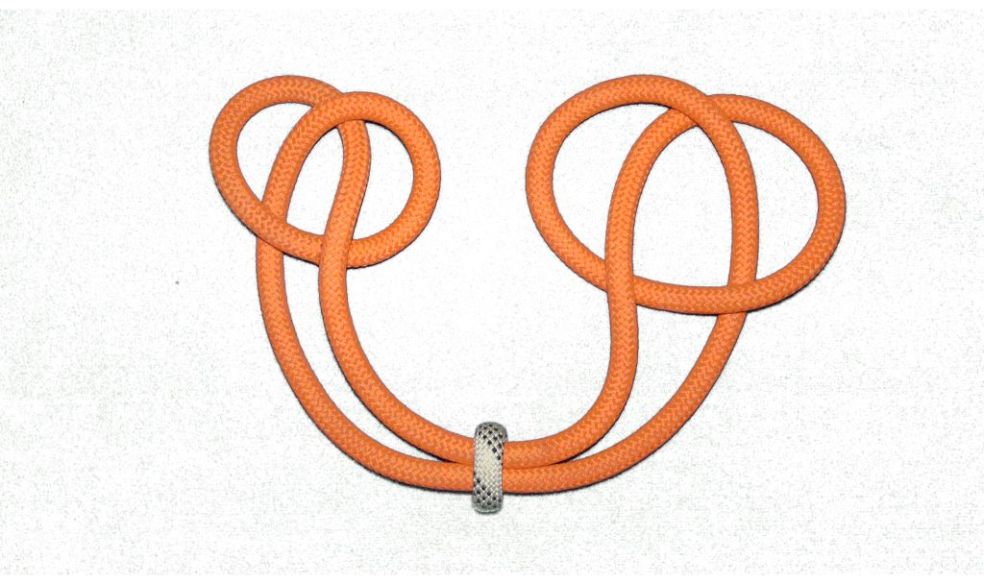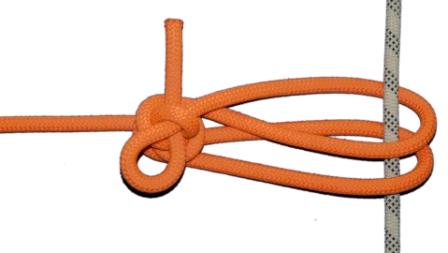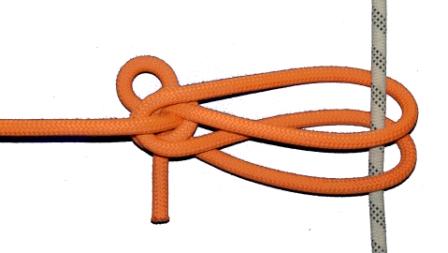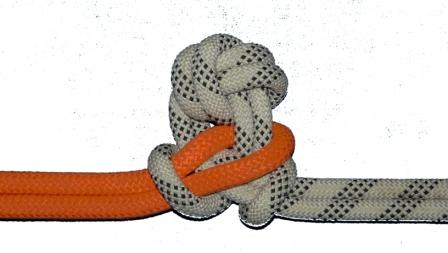A '“knot” is a 3 D configuration - formed by one, or more, “ropes” (*) - that cannot be transformed into a figure resembling one, or more, separate straight lines and/or perfect circles ( i.e., cannot be “untied”) due to one, at least, of the following three conditions :
- Topology
- Friction
- Constant length and cross section.
Most people believe that, if a knot cannot be untied, this is due to topology or friction only (condition 1 or condition 2). The existence of “Gordian knots” (**), proves that this can also be due to condition 3 only. So, although we cannot help untie Gordian knots, they, nevertheless, can help us understand and define what the knots that can be untied are.
(*) A “rope” is a locally elongated, continuous, flexible along its lengthwise dimension 3D object, that :
(1a),
-In Mathematical knots, studied within “Knot theory”, a sub-section of mathematical Topology-
retains its topology (1), but does not have friction (2), or constant length, or constant cross section (3). It is flexible/stretchable in every dimension ; it can even be punched, but it cannot be ruptured.
(1b),
-in Ideal knots, studied within “theory of Ideal knots”, sub sections of mathematical Geometry, and of Computational physics-
does not have friction (2), but retains its topology (1), and has a constant length and cross section (3), i.e. it is flexible only along its lengthwise dimension.
(2),
-in Physical knots, studied within “Nodeology”, by a handful of crazy maniacs in the forum of IGKT ![]() -
-
does have friction (2), but retains its topology (1), and has (approximately) constant length and cross section (3). ), i.e. it is (substantially) flexible only along its lengthwise dimension/direction.
[ Moreover, physical ropes cannot be bent/make a tight turn around an object with a diameter smaller than a certain minimum one, and this should perhaps be considered as a fourth condition - that can prevent a knot tied on physical ropes from being untied. I have not examined this (fourth) condition in this thread.)
(Note: The attempted description/definition above is about what a knot IS, for itself, and it is not about what a knot DOES, for us, when we use it as a fastening tool. The existence ( structure, form) of a knot is one thing; the application/use of a knot is another. I have proposed to use this distinction to classify the threads and posts about the knots we are talking about in this forum - instead of a classification based upon the distinction between “theoretical” and "practical aspects of knots. )
(**) A “Gordian knot” is an Ideal or a Physical knot that cannot be “untied”, even if this is not due to Topology (1), or Friction (2).
Conjecture: the only thing that can prevent a Gordian knot to be “untied”, other than Topology or Friction, is the fact that the Ideal and the Physical knots have constant length and cross section, i.e. condition (3). That is, the fact that the cross section of the ropes that make ideal and physical knots cannot be altered ( be shrieked or deformed ), together with the fact that they are defined/supposed to be flexible/stretchable only in their transverse dimension, means there might be cases where some part of one knot, that happens to be knotted, due to its volume, its bulk, cannot pass through another part of the same knot that happens to be a small ring. If this is the only way that those two parts can be separated, this knot cannot be untied, i.e. it is a Gordian knot. (At present, I am not aware of any mathematical proof or disproof of this conjecture.)
Gordian knots have been studied by P. Pieranski et all. (1), (2). They have searched for ideal or physical knots made by one or more separate/not-interlinked closed loops, each topologically equivalent to the unknot, that cannot be untied, even if friction is considered to be zero.
I present here the simplest two-part Gordian knot/bend I could think of. ( See the first of the attached pictures). Two topologically unlinked and equivalent to the unknot closed loops/rings are connected in a way that the knot cannot be untied, even if there is no friction present. The only necessary and sufficient condition, is condition 3, i.e. the ropes are considered to be of constant length and cross section . The one closed loop/ring ( the “white”) has the minimum constant length required to encircle 4 rope strands at maximum (?each rope strand is supposed to be tangent to two or three others-). I wonder if there can be any simpler Gordian knot/bend than this?
If we relax the condition that all loops should be equivalent to the unknot, the simplest link/bend I can think of is shown in the second of the attached pictures. The “orange-red” link is a closed loop with two overhand knots tied into it. The “white link” has the minimum constant length required to encircle 2 rope strands, it is a closed loop able to encircle 2-rope-strands-at-maximum. If we use a 4-ropes-strands-at-maximum “white” link, we can connect together two or more links like the “orange-red” one, and form a “Gordian chain”, as long as we wish it to be.
- http://arxiv.org/abs/physics/0103080
- http://www.maa.org/devlin/devlin_9_01.html
- http://www.guardian.co.uk/science/2001/sep/13/physicalsciences.highereducation
